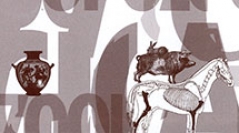

 Anthropozoologica
44 (1) - Pages 129-157
Anthropozoologica
44 (1) - Pages 129-157This paper explores the evolution of sheep and goat husbandry in central Anatolia through the analysis of new and published faunal data from Neolithic, Chalcolithic, and Bronze Age sites in the region. The major patterns of change over time in the pastoral system are discussed including the beginnings of herding, the appearance of the practice of young male kill-off, and the timing of the onset of the intensive use of secondary products. Results, including the discovery of longstanding differences in the management of sheep and goats as well as synchronic differences in herding strategies, have important implications for understanding the role of animal husbandry in central Anatolian communities and indicate that the history of pastoral production in the region is complex and multi-faceted.
Pastoralism, herd management, sheep, goat, domestication, Neolithic, Chalcolithic, Bronze Age, central Anatolia, Turkey.